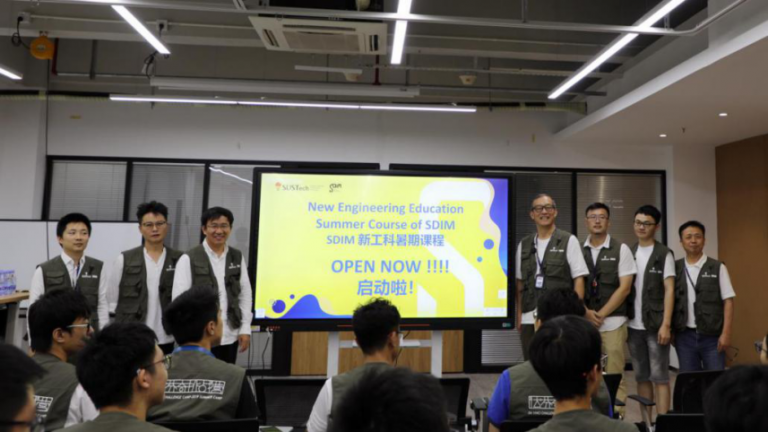Last week, the School of System Design and Intelligent Manufacturing (SDIM) at Southern University of Science and Technology (SUSTech) launched its New Engineering Education program and the “Da Vinci Challenge Camp – 2019 Summer Camp.”
More than 100 students joined in the summer camp, including SUSTech students, the international students and coaches from the United States, Denmark, Hong Kong and other countries & regions participating in the summer camp.
Professor Wu Jingshen, Dean of SDIM, introduced the mode, purpose and importance of NEE curriculum in high education renovation in his opening speech. He mentioned that the campers, as well as the students of present period, are the future of our Nation’s development of innovative economy. NEE are aimed to provide solutions for challenges like how the students should ‘equipment’ themselves during their university life, what kinds of qualifications are required besides professional knowledges that will make them have confidence, courage and capability to make achievement and contribution during the period of “Shortage of qualified personnel”, etc.
Professor Li Zexiang delivered the first course, “Design Thought 101”. He hoped that the students could work from their heart, instead of being cogs in a machine. Professor Li Zexiang also talked about the curriculum of Olin College of Engineering. The curriculum is no longer based solely on classroom knowledge, but should also emphasize that students should be able to design, analyze, produce and develop products in a team to commercialize products.

The Summer Course, “Introduction to Integrative System Design”, is a new course designed by the faculty members and industry experts of SDIM. It uses real-life projects as a learning method, allowing students to systematically learn industrial design. They will learn a variety of design concepts and methods in the product prototyping process, including how to effectively conduct user, product and market research and how to define products. In a project-driven, mixed-learning process, students develop and prototype models in order to learn how to use a variety of engineering tools, and develop self-learning skills to cope with unknown challenges. Project development is conducted in teams.
This new approach replaces the traditional book-based learning approach, allowing students to fully learn and practice theoretical knowledge, and develop positive self-learning ability through practice. Through this course, students will complete design thinking, product design and development, robot design and assistant systems, user pain point research and discovery, similar product research and market positioning, design sketches and mechanical drawings, mechanical design and basic elements, manufacturing and Learning in assembly design, material selection in design, 3D printing technology – materials preparation, embedded systems, project management and other subjects.
Proofread ByXia Yingying
Photo BySchool of System Design and Intelligent Manufacturing